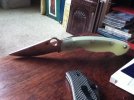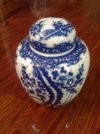on_the_edge
Gold Member
- Joined
- Jan 31, 2006
- Messages
- 11,706
I have read that there are several available options to finish ebony with satisfactory results--everything from simply sanding to a very high grit finish to several thin coats of tung oil followed by minwax paste to artist grade un-boiled linseed oil and 0000 steel wool. My question is what have folks here who have used ebony found to be the best way to finish ebony wood handles on a knife? I am of course interested in the ebony looking great (polished), but am mostly interested in the resilience and ease of maintenance of the finish. After all, the knife is a tool and it will be used often.




